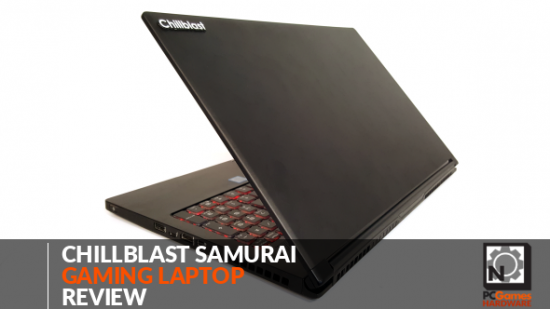Chillblast have used MSI’s beautiful GS63 Stealth Pro chassis to create a bespoke laptop with clean lines, VR skills, and proper gaming power. It’s essentially a Max-Q Lite machine.
Trackpads are rubbish for games, so you’ll want one of our picks of the best gaming mice to plug into your laptop.
Admit it, you want a laptop that’s slim, light, and yet still able to deliver serious gaming performance. Essentially, you want a laptop the size of a MacBook Air, but one that’s capable of delivering Xbox One X levels of gaming. Or maybe I’m just projecting… We are getting mighty close to that ideal, however, especially with Nvidia’s new Max-Q design GPUs and the potential of super skinny GTX 1050 Ti versions in the future.
And the £1,650 Chillblast Samurai shows you don’t need to spend another £1,000 on a Asus ROG Zephyrus laptop to pick up a gaming notebook that can provide a slimline design combined with decent gaming performance.
Chillblast Samurai specs
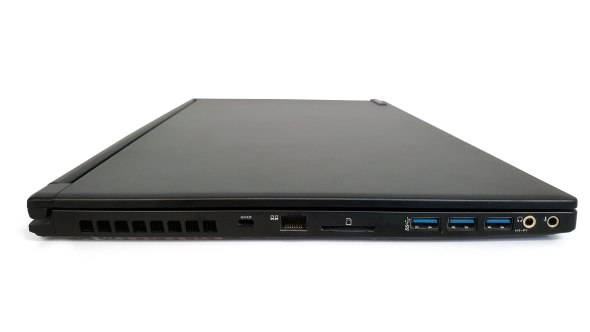
The Chillblast Samurai is a 15.6-inch laptop, using an IPS display with a native 1080p resolution. That’s smartly paired with a GTX 1060 mobile graphics card, a GPU that’s more than capable of delivering excellent gaming performance at that resolution. It’s the full 6GB version of Nvidia’s Pascal card and, because of the efficiency of the current GeForce architecture, it’s got essentially the same specs as the desktop variant.
The CPU at the heart of the Samurai is the classic mobile Kaby Lake i7, the Core i7 7700HQ. It’s a quad-core chip with eight threads – thanks to Intel’s HyperThreading tech – and it’s capable of running at a base clockspeed of 2.8GHz and a theoretical Turbo frequency of 3.8GHz.
On the storage side the Chillblast machine comes with a single 256GB M.2 SSD and a 1TB 2.5-inch hard drive for the big data stuff. But if you’re hankering after an optical drive you’re not going to get one of them in such a svelte chassis. The MSI chassis is only 17.7mm thick and weighs in at less than 2kg (that’s under 4lbs if you’re into that whole imperial measurement thing).
For the memory we’re looking at a single 8GB DDR4 module running at 2,133MHz. I’d still rather have a twin SO-DIMM setup to take full advantage of the full dual-channel memory bandwidth. You’re only getting half the potential memory bandwidth with a single stick, but that’s not such a big issue for us gamers.
Chillblast Samurai benchmarks
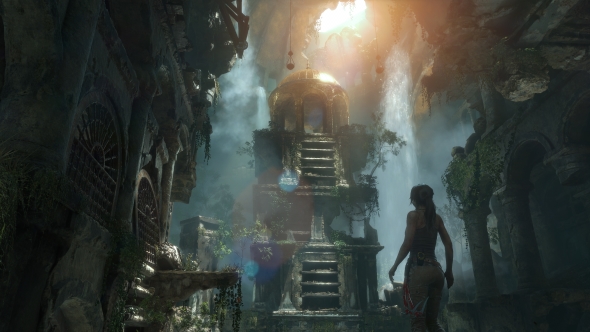
Chillblast Samurai performance
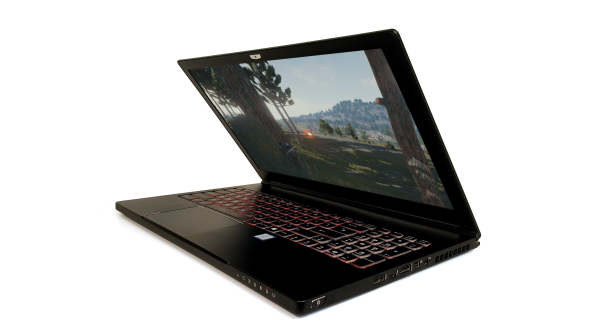
We’ve tested the Chillblast Samurai against Gigabyte’s beautiful Aero 15 and Razer’s svelte Blade laptops because they’re all rocking the same GTX 1060 GPU and, as a whole, represent about as close as you can get to a gaming ultrabook right now.
And in those terms the Samurai is either out in front or as close to the other two as to make no odds. Considering it’s also the cheapest of the three lightweight gaming laptops that’s an impressive showing. Because of the component cooling MSI have dropped into the GS63 chassis, the Samurai is able to run its GTX 1060 at a decent speed, almost up to the rated Boost clock of 1,670MHz.
In practise, the GTX 1060 actually hovers around the 1,600MHz mark, or just below, but that still means it can deliver the sort of gaming performance that will allow you to run the latest games at their highest settings at the requisite 60fps at 1080p. It’s generally quicker than the Razer Blade thanks to that improved cooling − the Blade’s 14-inch chassis is too constrained to allow the Pascal GPU full rein.
The Gigabyte Aero 15 has more powerful cooling, which means its GTX 1060 is often able to perform at a slightly higher level, but that doesn’t generally make a huge difference in the actual gaming performance. What it does do, however, is make the Gigabyte machine a lot louder.
One of the key things for Nvidia’s Max-Q design is the acoustic performance of a given machine. Nvidia say a Max-Q laptop needs to sit below the 40dB mark when running at full chat to be able to qualify and, even without one of their dedicated Max-Q GPUs, the Chillblast Samurai is just able to deliver on that front.
The ambient noise level of the Samurai while idling is just 30dB, but even when pushing the GPU to its fullest we recorded decibel levels of between 38-39dB when our sensor was placed directly on top of the laptop’s keyboard. You can see why MSI haven’t had to change anything to get their GS63 out there using a GTX 1070 Max-Q design GPU.
The multi-coloured RGB LED chiclet keyboard is almost a given in gaming laptops these days, but toning down the gaudiness is easily done via the bundled app (of which there are mercifully few) and the action on the keys themselves is perfectly acceptable. I’m not a huge fan of integrated buttons in the trackpads, but they’re generally responsive and the pad itself is accurate and pretty speedy.
The Chillblast Samurai is also an excellent laptop for VR too. I’ve been using it as the base of my Oculus VR setup because it’s so portable, quiet, and the GTX 1060 is absolutely capable of delivering a great VR experience. Unless you’ve got a massive dedicated space for your desktop PC the likelihood is you won’t have the area around your rig to game comfortably in virtual reality. And that means lugging your desktop machine to wherever you have the clear space to flail around. Laptops, then, are the best PC form factor to pair with your VR setup.
Chillblast Samurai verdict
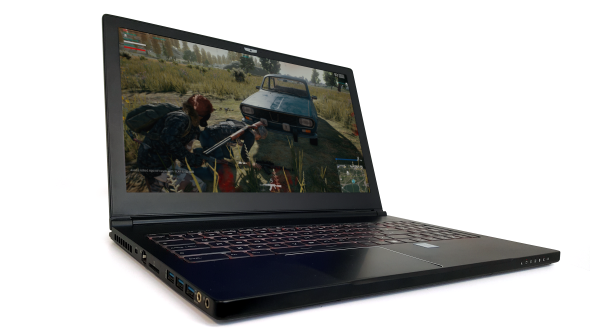
The Samurai is a genuinely lovely laptop. The sleek, matte black chassis is understated and refined and, thanks to that MSI cooling, is still able to keep the powerful components inside in check while remaining impressively quiet. It also shows what new MSI’s GS63 is going to be capable of with the full might of Nvidia’s Max-Q GPU design behind it.
The pairing of the GTX 1060 with a 1080p IPS panel gives the Chillblast machine the power to deliver native-res gaming performance at a silky 60fps. Obviously, we’d rather have a super-high refresh rate panel with G-Sync support, but that’s always going to add a pretty hefty price premium onto the machine, and is most definitely a luxury feature rather than a necessity. The only real downside to the Chillblast machine is the relatively chunky bezel surrounding the 15.6-inch panel.
But it’s not just about the system itself as Chillblast offer a fantastic five year warranty on the Samurai, which includes two years with a collect and return service attached.
